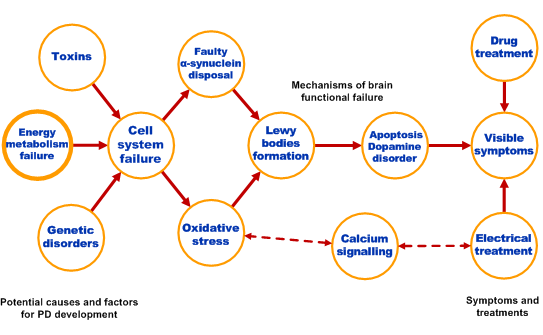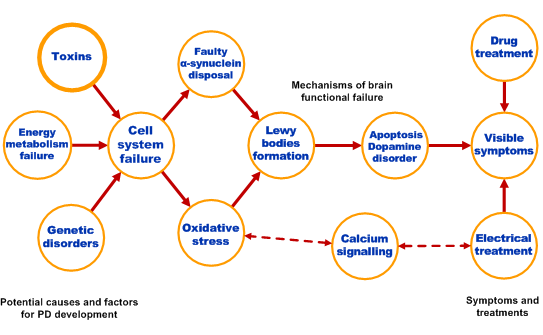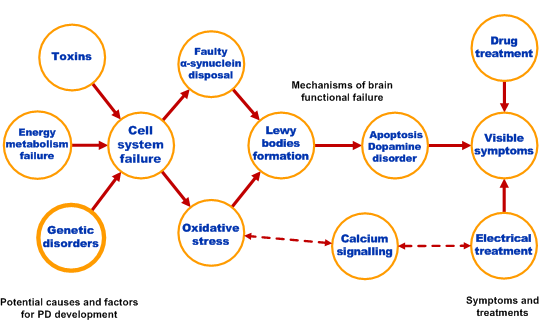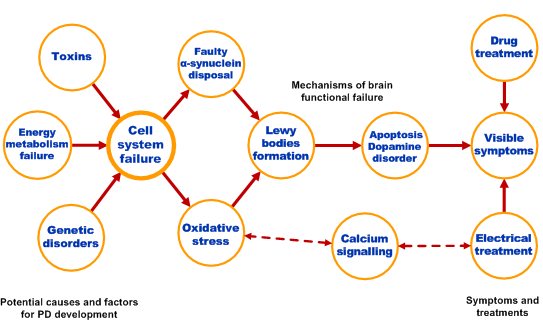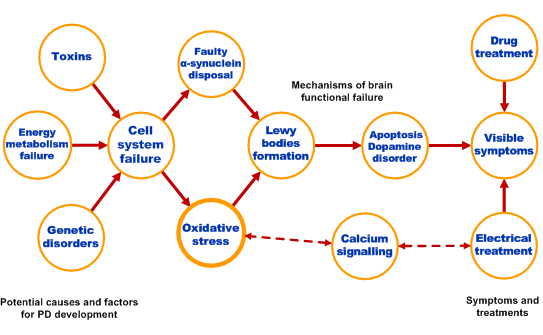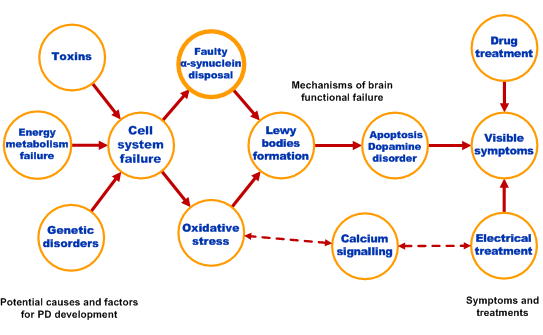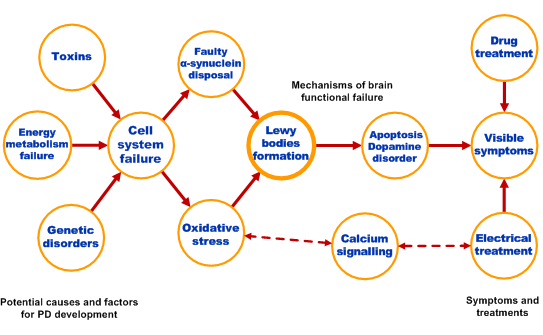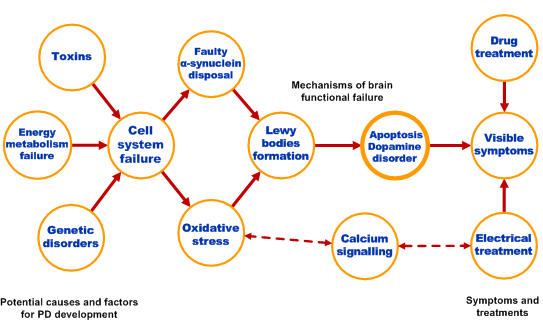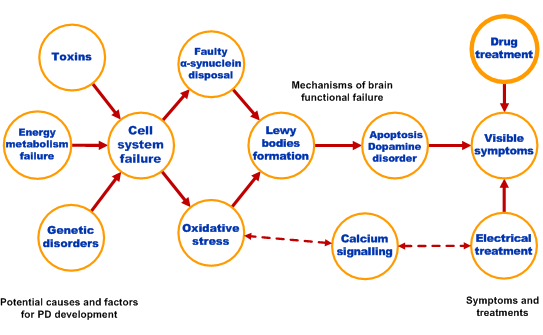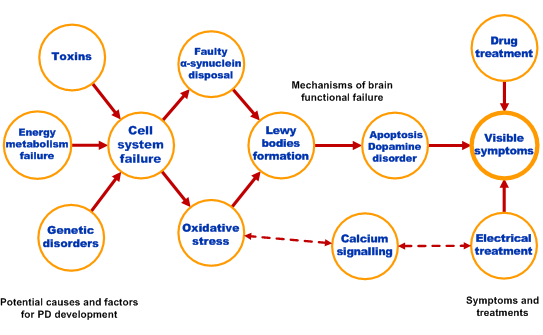Diagram of the Systems of Parkinson's disease
(click in the designated areas for further information)
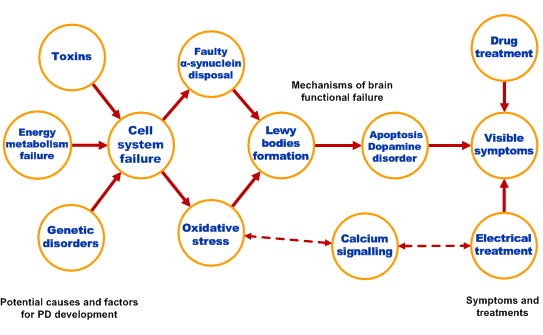
Calcium signalling
Overview Parkinsons Disease (PD) is pathologically distinguished by a declining Substantia Nigra (SN), presence of subcortical Lewy bodies and deficit of dopamine (DA) in the basal ganglia circuitry. Understanding the mechanism of SN degradation would be a primary focus on understanding of the PD progression. The SN neurons are functionally characterized by its pace-making activity. the pacemaking activity in the SN DA neurons is based on the somatodendritic L-type channel driven Ca2+ currents and to some extent on hyperpolarization activated and cyclic nucleotide gated cation (HCN) channels; together with Ca2+ activated SK K+ channels. Studies on the mechanism of pace-making indicate a strong evidence for high cytosolic Ca2+ levels as contributory to PD pathology (Sulzer and Schmitz, 2007). A rise in cytosolic Ca2+ concentration is used as a key activation signal in virtually all animal cells, where it triggers a range of responses, including neurotransmitter release, muscle contraction, and cell growth and proliferation. SN neurons function by an active play of Calcium mobility in energetically stressed environment. However, this becomes a setback when energy demand rises due to factors involved in progressive neuro-degeneration, making the SN neurons the most susceptible to damage in PD. [Top] |
Research Calcium signaling plays an important role in housing the dopamine molecules in a vesicle (alpha-synuclein being an important structural entity of the vesicle) and their subsequent release. Cell Calcium levels are equally significant in energy release as ATP in mitochondria. Moreover a disturbed Calcium homeostasis is found significant in apoptosis. Calcium dynamics in SN neurons should provide a good link in bringing together concepts of failure in energetic system, oxidative stress and genetic predispositions to a common platform. Modelling of the dynamics of Calcium oscillations in the excitatory pathway would act as the basis for an integrated system of study of the disease. [Top] |
Contact point
[Top] |
Selected References Bean. Stressful pacemaking. Nature, 447, 1059-1060, 2007. Chan, Guzman, Ilijic, Mercer, Rick, Tkatch, Meredith and Surmeier. Rejuvenation protects neurons in mouse models of Parkinson’s disease. Nature, 447, 1081-1086, 2007. de Grey. Appropriating microbial catabolism: A proposal to treat and prevent neurodegeneration. Neurobiology of Aging, 27: 589–595, 2006. Duchen, Verkhratsky and Muallem. Mitochondria and calcium in health and disease. Cell Calcium, 44, 1—5, 2008. Kiselyov and Muallem. Mitochondrial Ca2+ homeostasis in lysosomal storage diseases. Cell Calcium, 44, 103—111, 2008. Puopolo, Raviola and Bean. Roles of Subthreshold Calcium Current and Sodium Current in Spontaneous Firing of Mouse Midbrain Dopamine Neurons. The Journal of Neuroscience, 27(3):645– 656, 2007. Sulzer and Schmitz. Parkinson’s Disease: Return of an Old Prime Suspect. Neuron, 55, 8-10, 2007. [Top] |

